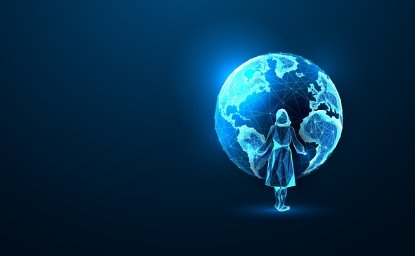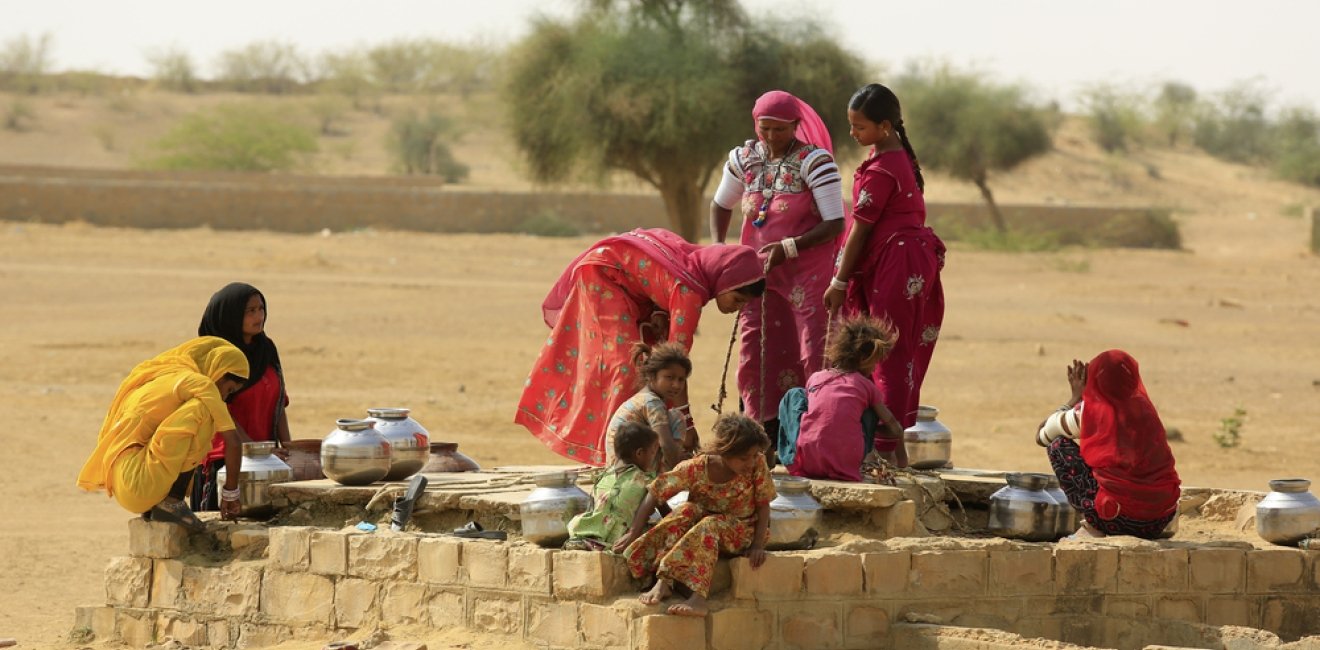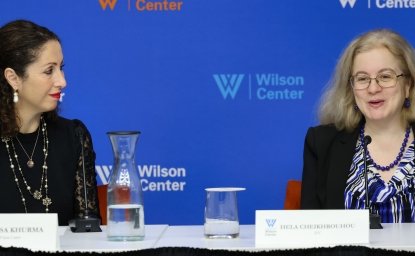Gender issues, climate change, and security problems are interconnected in complex and powerful ways. Unfortunately, some of these connections have not received enough attention from scholars, policy analysts, and policymakers. Many policy responses are consequently flawed. This has serious, real-world implications for the promotion of gender equality, the mitigation of climate change, and the advancement of peace and security.
The linkage that has received the most attention is the connection between climate change and security problems, including armed conflict. Scholars have studied environment-security dynamics for decades and, in recent years, both the climate studies and the security studies communities have explored this linkage: The exploration has been a two-way street.[1] Moreover, this recognition of climate-security linkages has crossed over from the scholarly and analytic worlds to policy communities." [2]
Unfortunately, gender issues have been neglected by many policy experts and policymakers. This is true for both the gender-climate and gender-security connections.
This is not to say that gender issues have been overlooked altogether. Since the mid-1990s, feminists, gender scholars, and women’s rights activists have worked to advance understanding of gender-climate and gender-security issues, and they have established that these linkages are powerful. They have also pushed for policy actions. Their efforts have led, in particular, to the adoption of the UN Security Council Resolution 1325 on Women, Peace and Security (WPS) in 2000 and nine subsequent WPS resolutions in the 2000s and 2010s. Since 2013, gender has been integrated in the United Nations Framework Convention on Climate Change (UNFCCC). In October 2021, the U.S. Government released its the first-ever National Strategy on Gender Equity and Equality, which emphasized the importance of elevating gender equality in humanitarian relief and security issues as well as promoting the link between gender equity and climate change responses. Activists have also pushed the UN Commission on the Status of Women (CSW) to make climate change and disaster risk reduction a priority theme at its 66th session in March 2022.[3] This is significant progress.
The problem is that almost all of this effort has come from gender champions—gender scholars, analysts, and activists: It has been a one-way street. Two decades into the 21st century, gender issues are still routinely ignored by the security and climate communities. (See Table 1.) This has profound policy implications because security policies and climate actions tend to be high-priority and relatively well-funded endeavors. This is where the action is, in terms of policy attention and resources.

The security and climate policy communities tend to be comprised of people, mainly men, who are almost completely lacking in gender expertise or even gender policy awareness. As a result, the gender dimensions of security and climate issues are usually not understood, prioritized, integrated, or even considered in security and climate policy packages. It follows, of course, that gendered risks and dangers—affecting more than 7.8 billion people around the world—are not being adequately addressed and opportunities to more effectively respond are being overlooked.
Gender inequality is strongly associated with instability and conflict, both within and between countries.
The sad irony is that this gender-obliviousness has tremendous implications for stability and security. Gender scholars have established—in one of the most important social science findings of the past two decades—that gender inequality is strongly associated with instability and conflict, both within and between countries.[4] Gender scholars have also shown that gender factors will be critical to the development of effective adaptation and mitigation policies as climate change progresses.[5] Ignoring gender, therefore, is misguided not just in terms of gender outcomes, but for security and climate outcomes as well.
The security and climate communities should focus much more intently on the gender dimensions of security and climate issues. Until now, analysis of these connections has been hampered by three sets of challenges: (1) simplistic and misguided understandings of gender; (2) siloed policy analysis and policy development; and (3) shady policy implementation including, in particular, the commitment of insufficient resources to gender priorities.
Misguided Understandings of Gender
Most experts in the climate change and security policy communities have failed to integrate gender perspectives into their efforts because, for starters, they have a simplistic, misguided understanding of the core concept—gender. There are five interconnected problems.
First, most climate and security experts make a common, fundamental error: They conflate “gender” and “women,” and they use the terms interchangeably. With this mindset in place, they define “gender issues” as “women’s issues” and, since women’s issues are usually not prioritized in male-dominated policy circles, these issues are downplayed or disregarded altogether.
Second, this conflation impedes the development of proper gender perspectives on important policy problems. Instead of thinking deeply about the gender dimensions of real-world developments—with everyone participating in the effort—the conflation of “gender” and “women” leads policymakers to conclude that it is sufficient to get “a women’s perspective” on the issues at hand. This can lead to the inclusion of a few token women in policy discussions—a process that is universally derided by gender scholars as “add women and stir.” Although it is important to include women in policy discussions—ideally, with 50-50 gender balances—developing a true gender perspective on policy problems requires another step: The development of more sophisticated, gender-focused, analytical frameworks.
Third, the prevailing male mindset also conflates “women and girls” and “women and children.” This infantilizes women and treats them as powerless. It reinforces the stereotype that frames women as victims and in passive, protective terms. It is important, of course, for policy communities to consider the impact of climate and security problems on women and girls, but it is misguided to frame women in passive, powerless, protective terms and limit them to this compartment.
Fourth, conflating “gender” and “women” reinforces a binary and non-intersectional understanding of gender. It leaves out LGBTQ+ people, and it fails to consider the ways that gender intersects with class, race, ethnic background, disability and age. Proper gender perspectives are inclusive, comprehensive, and analytically sophisticated.
Fifth and finally, a focus on “women” conveniently allows male-dominated policy establishments to ignore the fundamental sources of the gender inequalities that are pervasive in human affairs: men themselves, malign masculinities, and the pernicious patriarchies that frame social, economic, and political systems. Ignoring these core problems allows men to circumvent their own responsibilities. As sociologist Bob Pease has argued, “Gender is easily equated with women and thus can readily ignore the wider relationship with men’s domination and power.” With respect to climate issues specifically, Pease has noted, “a focus on women’s vulnerability in the face of climate change may not challenge men to interrogate their complicity in environmental degradation.”[6]
Developing sophisticated gender perspectives is also analytically challenging because it means grappling with complicated, highly contentious issues: Social understandings of masculinity and femininity; the gendered, patriarchal institutions that structure social, economic, and political interactions; and the gendered nature of power, which is fundamental to all of the above. As UN Secretary-General Antonio Guterres has observed, “Gender equality is a question of power. But power will not redistribute itself equally in a male-dominated world.”
These gender dynamics are powerful across issue areas, including climate change and security issues. Climate change and security institutions remain overwhelmingly male-dominated, and they frame issues mostly in masculinist terms.
Pease has noted that “the politics of climate change are shaped by masculinist discourses. This is so even as female representation in science is increasing. Thus, the dominant discourse of climate change is that it is a scientific problem that requires technical and scientific solutions.”[7] The masculinist nature of the climate studies community is manifested in preferences for technical and scientific mitigation projects over projects that focus on vulnerabilities. Similarly, environmental law professor Karen Morrow has concluded that, although there has been some progress on gender in the climate change community, “an economics-driven, technocratic stance toward climate change continues to dominate.”
Similar dynamics play out in military organizations and security institutions. Political scientist Ellen Haring has described national military organizations as “quintessentially masculine constructs that rely on notions of men as warrior-protectors and women as the protected. They are constructed along a patriarchal hierarchy with commanders (‘old men’) leading small to large units (‘bands of brothers’) whose mission is to protect the homeland in the name of ‘national defense’.” Security issues are usually framed in terms of national-level threats that require military responses; human security threats and non-military policy responses are downplayed or ignored altogether. Although security institutions, including defense ministries and military organizations, have been involved in the implementation of the WPS agenda, gender perspectives remain marginal in most national security institutions.
In sum, narrow and misguided depictions of gender are pervasive and still entrenched in climate and security policy circles. This has led to simplistic, misguided assessments of climate and security problems, including the variable risks and vulnerabilities that groups and individuals face because we are all gendered people. These flawed analytical frameworks have led, not surprisingly, to flawed policy formulations. Policymakers who have not developed sophisticated gender perspectives are inevitably incapable of integrating gender into climate and security policies. This is bad all around: It is bad not just for gender outcomes, but for climate and security outcomes as well.
Siloed Analysis and Policy
Policy experts and policymakers often emphasize the need for whole-of-government and whole-of-society efforts to deal with multidimensional policy challenges, such as climate change and security problems.[8] This is easier said than done. It is inherently difficult to organize large arrays of semi-autonomous governmental and societal actors into smooth-running policy machines. Instead, policy expertise and policy actions are often siloed: Policy problems are studied and addressed by issue-specific groups and agencies that do not do a good job of coordinating with others. A compartmentalized approach might be adequate when the problems at hand are small, simple, and self-contained. It is a recipe for failure if policy problems are large, complex, and interconnected.
Gender issues, climate change problems, and security threats are all highly complex challenges and, as argued in this paper, they are deeply interconnected. Unfortunately, policy work in each of these areas has been largely siloed. There have been some efforts to make connections with the other policy areas and their corresponding policy communities, but these initiatives have been limited. The gender-security and gender-climate connections—as well as the triple nexus of gender, climate, and security—need to be developed more systematically. To date, the gender studies community has taken the lead in studying these connections and developing policy ideas. The security and climate communities need to recognize that they have a stake in these connections as well, and they need to become proactive in developing gender-focused initiatives. (See Table 2.)

Climate-Security Connections
The linkage between climate change and security problems is the one part of the equation that has received extensive, bidirectional attention, with efforts coming from both climate change and security policy experts. There are three main reasons why considerable progress has been made in understanding the connections between climate change and security problems and in translating these understandings into policy actions.
First, starting in the 1990s, scholars have focused intently on the connections between environmental pressures, resource scarcities, and climate change, on the on hand, and inter-state security, intra-state security, armed conflict problems, and human security, on the other. There is now a robust scholarly literature on the many connections between environmental and security problems, which has led to the emergence of a new, important field of environmental security studies.[9]
Second, the security studies and security policy communities have become deeply concerned about the current and looming effects of climate change on arrays of stability and security problems. The many concerns include: rising sea levels threatening the existence of small island nations along with the world’s coastal cities and populations; intensifying naval and resource competitions in the Arctic; the impact of extreme weather and rising temperatures on the viability of human habitats; and the impact of climate-generated population movements on governmental viability, national security, and regional stability. Security policy experts and policymakers see climate change as a powerful threat multiplier that will compound the drivers of social instability, national instability, and violent conflict.[10]
Significantly, this exploration has crossed over from the academic and analytic worlds into policy communities. For example, the U.S. government released a suite of reports in October 2021 that elevated climate change as a policy priority in U.S. foreign and security policy.[11] In December 2021, UN Secretary-General Guterres emphasized that climate change “has a multiplier effect and is an aggravating factor for instability, conflict and terrorism.”
Unfortunately, public confirmation of the climate-security nexus has not been universal. The UN Security Council has held multiple debates on climate and security since the 2000s, but several major powers have refused to formally recognize climate-security connections. In December 2021, the Security Council failed to adopt its first stand-alone resolution on climate change and the maintenance of international peace and security; Russia and India voted against the resolution, and China abstained.[12]
Third, climate experts recognize that climate change is already having profound effects on human security around the world and that these dangers will intensify in the years ahead. The climate studies and policy communities also recognize the political value of framing climate issues as security issues. Security threats usually receive attention from national leaders, and they attract high levels of resource commitments. Security problems are usually treated as top priorities. If an issue can be “securitized”—framed as a security threat—it is more likely to be elevated as a policy priority.[13]
Gender-Climate Connections
The connections between gender issues and climate change have received less attention overall in the academic and policy worlds. Significantly, almost all of the effort that has materialized has come from gender scholars and women’s rights activists. The male-dominated climate studies community sees climate change primarily as a scientific, technical, and economic problem. It recognizes the human consequences of climate change, but it has not focused on the gendered dimensions of climate change developments.
The male-dominated climate studies community sees climate change primarily as a scientific, technical, and economic problem.
Gender experts recognize that climate change will have profoundly gendered consequences because human society is profoundly gendered. The starting point for analyzing the impact of climate change on humanity is understanding that the “pre-change” societal baseline contains a multitude of intersectional inequalities, with gendered inequalities being at the top of this list. In many places, women already face greater environmental risks and dangers, they already face an array of water and food security problems, and they generally have fewer economic and political resources available to deal with any dangers generated by environmental developments. Scholars have demonstrated that women are disproportionally affected by climate change due to social, economic, and political inequalities. Specifically, women are “more affected by health impacts associated with climate change than men.” Women are also more affected by climate-related food insecurity than men.
Similarly, LGBTQ+ people are also facing disproportionate dangers, often from disadvantaged social, economic, and political positions. Men will face gendered climate-generated problems as well, especially if they take personal risks to live up to social expectations that call for them to be providers for their families. Climate-driven instabilities may also make armed conflicts more likely, which will add an additional array of gendered dangers to the equation.
Gender activists have also pushed for gender-balanced participation and gender provisions in global climate change deliberations. In 2013, the Conference of the Parties (COP) to the UNFCCC integrated gender into the conference’s agenda by requiring annual reporting on the gender composition of state delegations and UNFCCC-constituted bodies. In 2017, the COP23 adopted its first Gender Action Plan. National governments have also been encouraged to incorporate gender into their climate change commitments—officially known as Nationally Determined Contributions (NDCs). This has produced some positive results: In 2021, gender was mentioned in 78 percent of NDCs, compared to 40 percent in 2016. Gender has also been incorporated in international agreements to reduce the risks of disasters. For example, the Sendai 2015-2030 Disaster Risk Reduction Framework mentions women’s heightened vulnerability in times of disasters and the need for increased participation by women in decision-making processes.
Although some progress has been made in terms of formal declarations and commitments, the Organization of Economic Co-operation and Development (OECD) reported in May 2021 that the linkages between gender and environmental goals have been “insufficiently visible and inadequately prioritized” in policies and that they are “largely missing in the nine environment-related Sustainable Development Goals (SDGs)” adopted in 2015. The OECD also noted the importance of integrating gender perspectives into the development of climate change policies, including adaptation and mitigation policies. The development of gender perspectives is inhibited by a lack of policy interest and gender expertise in many policy communities, but also by a widespread lack of gender-disaggregated data. Gender-focused policies have to be carefully designed and assessed, and this depends on the compilation of much better gender-disaggregated data.
It is clear that climate change will have a wide array of gendered effects on human populations in the years ahead. This is well-understood by gender experts, and it needs to be better understood by climate experts.
The causal arrow also points the other way, but much less attention has been devoted to the impact of gendered societies on climate change. To understand the impact of gender on the environment, one has to start with the gendered structure of economic systems and modes of production, especially since the advent of the Industrial Revolution and modern capitalism in the late 1700s. Feminist economists have suggested that capitalism cannot exist in the absence of other hierarchal structures, including patriarchal power structures. They have also argued that these capitalist, patriarchal dynamics undermine environmental sustainability.
More concretely, scholars have sought to directly link gender to greenhouse gas emissions by examining gendered work/consumption patterns. Economist Marjorie Griffin Cohen has shown that, in Canada, the male share of greenhouse gas emissions in the industrial and manufacturing sector is overwhelming: 76 percent. Similarly, men are responsible for 89 percent of emissions from road vehicles. Cohen has argued that calculating gendered contributions to climate change helps policymakers in three main ways. First, it maps who does what. This may help policymakers assign responsibilities for specific problems. Second, it helps to identify the gendered effects of climate policies. This could lead to policies that promote gender equality, rather than deepening existing gender inequalities. Third and most importantly, a gendered mapping of greenhouse gas emissions provides a more complete picture of the gendered dimensions of modern economic systems. This could help to shift economic priorities away from a narrow focus on GDP and towards areas that are less damaging for the environment and more likely to advance gender equality and human well-being.[14]
Gender-Security Connections
A good starting point for understanding gender-security connections is focusing on an aspect of human affairs that is often taken as an unspoken given: Most national leaders are men, national military organizations are male-dominated institutions, national security establishments are male-dominated policymaking systems, almost every decision to go to war has been made by a man, and men are guided by powerfully-held ideas about masculinity—including beliefs about political hierarchies and status, responsibilities and risks, domination vs. submission, escalation vs. compromise, and aggression vs. cooperation. Armed conflict, moreover, is highly gendered: Most of the military personnel who fight and die in wars are men. Women face gendered dangers as well, including high levels of conflict-related sexual violence. Feminists also emphasize that gender-based violence—mainly but not exclusively against women—is widespread in everyday life and that this is very much a security issue.
The horrific conflict-related sexual violence in the Balkans, Rwanda, the Democratic Republic of the Congo, and elsewhere in the 1990s was the impetus for the women-led movement that led to the adoption of ten UN Security Council resolutions on Women, Peace and Security starting in October 2000.
The horrific conflict-related sexual violence in the Balkans, Rwanda, the Democratic Republic of the Congo, and elsewhere in the 1990s was the impetus for the women-led movement that led to the adoption of ten UN Security Council resolutions on Women, Peace and Security starting in October 2000. These were milestones developments that placed gender-security issues on policy agendas at the international and national levels. One of the keys has been the call for adoption of National Action Plans (NAPs) that integrate and implement WPS priorities in national security policies. By 2021, 51 percent of UN member-states—98 countries—had developed WPS NAPs. This is policy progress.
In gender-security matters as well, the causal arrow points both ways. As feminist scholar and peace activist Cynthia Cockburn has argued, “patriarchal gender relations are among the ‘root causes’ of militarism and war.” Starting in the 1990s, gender scholars began to investigate the relationship between gender inequalities and the propensity for conflict. It has now been established that gender inequality is strongly correlated with social and political instability, inter-state and intra-state conflicts, as well as violent extremism and terrorism.[15] Gender inequality is more powerfully correlated with instability and conflict than other, widely-emphasized political and economic factors. Political scientists Valerie Hudson and Hilary Matfess have shown how social institutions, such as certain marriage practices, can be drivers of violent conflict and insecurity at the national level. Political scientist Laura Sjoberg has argued that gender hierarchies operate not only at the individual level but also at the state and systemic levels. The international system is thus characterized by both anarchy and gender hierarchies. Sjoberg posits that conflict between states “is a competition where states, as gendered actors in a gendered system, are out to dominate rather than survive.”
Gender inequality is more powerfully correlated with instability and conflict than other, widely-emphasized political and economic factors.
To put it bluntly, if one wants to understand the conditions that are associated with instability, insecurity, conflict, and war, one simply has to recognize the importance of gender and gender inequalities in the security realm. Unfortunately, the male-dominated security studies field—along with male-dominated national security establishments—has been consistently uninterested in gender issues. The irony, of course, is that men have been central to security decision-making since the dawn of time, these men are highly gendered in their views and behaviors, but they have not been analyzed in gendered terms by security scholars. There is a nascent gender and security field in the academic world, but this field of inquiry has emerged almost entirely out of feminist and gender studies. The traditional security studies field has been oblivious to gender-security connections.
The Triple Nexus: Gender, Climate Change, and Security
In addition to considering these three dyadic connections—climate-security, gender-climate, and gender-security—it is important to take the next step and consider how the “triple nexus” of gender issues, climate change, and security problems are interconnected in a three-way problem set.
A few steps have been taken to explore the gender-climate-security triad. The International Union for the Conservation of Nature (IUCN) has shown that countries with high scores for gender inequality also have higher propensities for instability and conflict as well as greater climate vulnerabilities. Researchers have shown that both climate change and armed conflict lead to increases in child marriages.[16] Researchers have also made connections between cattle raiding, climate change, and conflict.[17] Climate change, armed conflicts, and the population movements that accompany both climate change and conflict increase the dangers of gender-based violence—for women, in particular.
In sum, scholars have concluded that “gender can be a motivating factor for taking up arms” and that it can be “an important intervening factor in the climate-conflict nexus, particularly when climate change affects associated risk factors like droughts, cattle availability, and livelihood insecurity.”
At the United Nations and within the WPS and development communities, policy experts and advocates have started to acknowledge “the triple nexus of gender, climate change and security.”[18] WPS advocates have pushed to include climate issues in WPS deliberations.[19] The UN Security Council formally added climate change to the Women, Peace and Security agenda in 2015, bringing these three issues together—at least on paper.
Unfortunately, policy progress has been uneven. In the 2019 UN Security Council debate on climate and security, only five of the 75 member-states that spoke at the session recognized gender as an important factor in climate-security risks. As of 2020, only 17 of the 80 WPS NAPs then in place included climate change considerations.
An integrated, three-way approach to gender, climate change, and security is needed. This will enable scholars and policy experts to better understand the root causes and complex drivers of real-world problems across these three areas. This, in turn, will provide the analytic foundation that will be needed for policies that can advance all three priorities: gender equality, sustainable development, and the promotion of peace and security.
Shady Policy Implementation
Gender has been and still is the missing link in the gender-climate-security equation. Three problems stand out: Insincere declarations, inadequate resources, and insufficient data.
Talking the Talk
National and international policymakers have made a number of gender commitments over the past two decades, but gender priorities are poorly integrated into or entirely left out of most security policy and climate change actions.
At the COP26 conference in Glasgow in late 2021, women’s representation across the meeting’s sixteen constituted bodies was only 33 percent.
Even relatively simple and visible commitments—such as ensuring gender balances in policymaking bodies and national delegations—have been poorly implemented.[20] At the COP26 conference in Glasgow in late 2021, women’s representation across the meeting’s sixteen constituted bodies was only 33 percent.[21] While this was an improvement (compared to 24 percent in 2013), the Glasgow number was still far from parity. At the 2021 meeting, moreover, only four of the sixteen official bodies achieved gender parity (or were close to it); women constituted less than a third of the participants in seven bodies.
Although women are underrepresented in official governmental and intergovernmental circles, women—and particularly young women—are overrepresented in nongovernmental organizations and civil society. According to one report on the Glasgow meeting, “Those with the power to make decisions about how much the world warms in the coming decades are mostly old and male. Those who are angriest about the pace of climate action are mostly young and female.” In this respect, Swedish activist Greta Thunberg reflects the demographics of the global climate movement she has helped to create.
Gender has also been poorly integrated in national climate policies. In its 2021 study on gender and national climate planning, the IUCN noted that while gender is increasingly mentioned in NDCs, a quarter of NDCs did not consider gender as a factor that should be taken into account—including the NDCs of the United States, Russia, Japan, South Korea, and Australia.
Similarly, large gender imbalances persist in the security field. Gender gaps are pronounced in many think tanks. Women also remain in the minority in most foreign affairs and defense ministries. In 2020, women constituted only 23 percent of delegates in peace processes led or co-led by the United Nations. As of December 2020, only 5 percent of military troops in UN peace operations were women. Although 51 percent of UN member-states have developed WPS National Action Plans that include commitments to increasing the participation of women in national security affairs, many governments treat their NAPs as political exercises. Many governments have not integrated their WPS NAPs into their national security policies.
Given recent trends, the World Economic Forum estimates that it will take 145 years to attain gender parity in politics.
There are similar disparities and problems in politics. In 2020, women served as Heads of State or Government in only 22 countries. Globally, only 26 percent of all members of parliament are women, and less than 23 percent of ministerial posts are occupied by women. Given recent trends, the World Economic Forum estimates that it will take 145 years to attain gender parity in politics. Furthermore, women engaged in politics around the world face systemic sexism, misogyny, harassment, and violence.[22]
Show Me the Money
Ultimately, the seriousness of policy commitments can be measured by the amount of resources governments allocate to these commitments. Few countries have introduced gender budgeting—that is, the allocation of specific resources to gender priorities and initiatives.
On the climate front, most NDCs do not include gender budgeting in climate commitments.[23] That is, most countries do not allocate specific resources to the integration of gender perspectives in climate actions and for the promotion of gender equality. Climate finance—that is, public, private, and philanthropic funds available for climate change mitigation and adaption plans—is most often gender-blind.
Similarly, most WPS NAPs do not have specific, designated resources attached to them. In 2018, only 22 percent of NAPs had allocated budgets. In 2020, researchers identified an even more disturbing development: Average budget allocations for WPS NAPs had been on a downward trend since 2014.
The political commitments that have been made in support of the WPS agenda and gender equality are encouraging, but they must be backed up by specified, targeted resources. Gender budgeting is needed to ensure that gender commitments in the security and climate arenas are implemented. Without gender budgeting, political commitments are likely to remain rhetorical displays.
Data Chasms
A final problem is a worldwide lack of gender-disaggregated data across an array of social, economic, political, environmental, and security issues. This might appear to be a mundane problem for policy nerds, but it is fundamentally important.
It is essential for scholars and policy analysts to be able to analyze current problems with precision. This is the key to developing well-crafted policy options that, in turn, can be assessed with precision. Assessment is essential if successful policies are to be recognized and supported with additional funding. By the same token, less successful initiatives have to be identified, modified and, if they cannot be fixed, terminated. Having high-quality data—accurate, consistent, comprehensive, timely, regular, longitudinal data—is the foundation of policy development, policy assessment, and policy success.
At the beginning of the 2020s, it is striking that some of the most important gender-related data collection efforts are still being made by non-governmental research institutes and organizations, not by governments themselves.
The compilation of gender-disaggregated data has been mentioned from time to time in WPS resolutions and other international declarations, and some progress has been made over the past two decades, but gender data sets are still far from sufficient. At the beginning of the 2020s, it is striking that some of the most important gender-related data collection efforts are still being made by non-governmental research institutes and organizations, not by governments themselves.[24] National governments have better access to their own people and they have far more resources than most nongovernmental organizations, but many national governments have not made the collection and distribution gender-disaggregated data a priority. This is a political decision: In most countries, an accurate depiction of gender disparities would reveal ugly realities.
Conclusions
The obstacles to making the many connections among gender, climate change, and security are both analytical and political. In analytical terms, all of these issue areas—gender inequalities, climate change developments, security problems—are multidimensional and complex. Data problems add to the challenge. Bringing any two of these issues together for an interactive analysis compounds the degree of difficulty. Bringing all three together at the same time takes it to yet another level.
The political problem is the silo problem. In the academic world and in policy communities, specialization is the norm. Scholars and policy experts tend to focus on single sets of issues, and they tend to congregate in departments and programs focused on specific topics or regions. In the policy world, national and UN agencies are usually defined in terms of specified policy issues and policy missions. These organizational and bureaucratic silos are defined by laws, policies, structures, cultures, traditions and—very importantly—budgets. In the policy world, organizational siloes are exceptionally large, compartmentalized, rigid, revered, and defended. As noted above, promoting inter-agency communication and coordination is inherently difficult; sustaining it over time it is even harder. Political leaders must make sustained commitments to these integrative efforts.
The “triple nexus” problem has been recognized, but more needs to be done. One priority should be bringing together scholars, policy experts, and policymakers from all of these communities: gender scholars and WPS activists; climate change experts and policymakers; security scholars and national security policymakers. Experts and officials from the academic and nongovernmental worlds, national governments, regional organizations, and UN agencies should all be convened. UN agencies such as UN Women, the UN Development Program, and the UN Environment Program have called for the creation of multidisciplinary research networks to strengthen knowledge on the linkages among these three sets of issues. These initiatives should be supported politically and financially. Ultimately, scholars, policy analysts, and policymakers have to be much more inclusive and sophisticated in analyzing gender issues, climate change, and security problems at the same time.
In all of this, it is essential to remember that gender is not just about the vulnerabilities of women, but also about the proclivities of men. Much more attention needs to be paid to how ideas about masculinity and male behavior shape gender relations, the environment, and security problems. Gender inequalities, climate change problems, and violent conflicts are all man-made disasters—literally.
Chantal de Jonge Oudraat is a Wilson Center Fellow in the Environmental Change and Security Program (ECSP). She was President of Women In International Security (WIIS) from 2013 to 2021.
Michael E. Brown is a Professor of Political Science and International Affairs at the George Washington University Elliott School of International Affairs. He was Dean of the Elliott School from 2005 to 2015.
Sources: Alternate Routes, Carbon Brief, CARE, Council on Foreign Relations, Chantal de Jonge Oudraat and Michael E. Brown (2020), Elaine Enarson and Bob Pease (2016), Nancy Folbre (2021), Forbes, Georgetown Institute for Women, Peace and Security, Inter-Parliamentary Union, International Feminist Journal of Politics, International Union for Conservation of Nature, Gunnhildur Lily Magnusdottir and Annica Kronsell (2021), Nature Climate Change, Oñati Socio-Legal Series, Organisation for Economic Co-operation and Development, Politics and Governance, Our Secure Future, Laura Sjoberg (2014), Stockholm International Peace Research Institute, The Guardian, The New York Times, The University of Sydney, The Washington Post, The White House, United Nations, United Nations Framework Convention on Climate Change, United Nations Office for Disaster Risk Reduction, United Nations Secretary-General, United Nations Security Council, United Nations Women, Women in International Security.
[1] For an overview of the literature see Nina von Uexkull and Halvard Buhaug, Security Implications of Climate Change: A Decade of Scientific Progress; Vally Koubi, Climate Change and Conflict; Beatrice Mosello, Lukas Ruttinger and Liesa Sauerhammer, The Climate Change Conflict Connection: The Current State of Knowledge; ICRC, When Rain Turns to Dust: Understanding and Responding to the Combined Impact of Armed Conflicts and the Climate and Environment Crisis on People’s Lives. See also Edward R. Carr, “Gender and Environmental Security” in Chantal de Jonge Oudraat and Michael E. Brown, eds., The Gender and Security Agenda: Strategies for the 21st Century.
[2] In October 2021, the U.S. government released a suite of reports to elevate climate change as a policy priority in U.S. foreign and security policy. See, U.S., The White House, Fact Sheet Prioritizing Climate in Foreign Policy and National Security – Statements and Releases. See also Lauren Herzer Risi, The Biden-Harris Administration Releases a (Nearly) Whole-of-Government Response to Climate Security; Joshua W. Busby, Beyond Internal Conflict: The Emergent Practice of Climate Security; Daniel Abrahams, From Discourse to Policy: US Policy Communities’ Perceptions of and Approaches to Climate Change and Security; Elisabeth A. Gilmore, Lauren Herzer Risi and Halvard Buhaug, Bridging Research and Policy on Climate Change and Conflict; and Judith Nora Hardt, The United Nations Security Council at the Forefront of (Climate) Change? Confusion, Stalemate, Ignorance.
[3] See also the Convention on the Elimination of Discrimination against Women (CEDAW) General Recommendation 37. The recommendation emphasizes the impact that climate change and disasters have on women and girls, and it calls for measures to protect them. For an overview, see UN Women, Concept Note Expert Group Meeting on Achieving Gender Equality and the Empowerment of all Women and Girls in the Context of Climate Change, Environmental and Disaster Risk Reduction Policies and Programs.
[4] For an overview of this research, see Valerie M. Hudson, Donna Lee Bowen and Perpetua Lynne Nielsen, The First Political Order: How Sex Shapes Governance and National Security Worldwide. See also Kathleen Kuehnast, “Gender and Armed Conflict,” in Chantal de Jonge Oudraat and Michael E. Brown, eds., The Gender and Security Agenda: Strategies for the 21st Century.
[5] For an overview of the literature see Rebecca Pearse, Gender and Climate Change. See also OECD, Gender and the Environment: Building Evidence and Policies to Achieve the SDGs; Mary Picard, Empowering Women in Climate, Environmental and Disaster Risk Governance: From National Policy to Local Action; and Bernadette P. Resurrecion, Gender, Climate Change and Disasters: Vulnerabilities, Responses and Imaging a More Caring and Better World.
[6] Even scholars and experts in the feminist, WPS and gender communities, while recognizing gender as a non-binary and intersectional concept, focus mostly on women. Men and masculinities are virtually absent in the discussions related to security and climate change.
[7] See also Sara Bondesson, Why Gender Does Not Stick: Exploring Conceptual Logics in Global Disaster Risk Reduction Policy.
[8] See, for example, Antonio Guterres, Our Common Agenda – Report of the Secretary-General.
[9]See note 1.
[10] See notes 1 and 2.
[11] See note 2. Unfortunately, the gender equity and equality priorities developed in the U.S. gender strategy, were not included in the suite of climate change and security reports released in October 2021.
[12] As one of the five permanent members of the Security Council, Russia’s vote against the resolution vetoed it. For an overview of the work of the UN Security Council in this area, see Security Council Report, Climate and Security: High-Level Open Debate – What’s in Blue; Security Council Report, December 2021 Monthly Forecast: Thematic Issues, Climate Change and Security. See also Hardt, The United Nations Security Council at the Forefront of (Climate) Change?.
[13] The tactical value of “securitization” has been recognized for decades. For example, in 1994 the United Nations Development Program (UNDP) began to frame an array of important development problems as security problems: economic security, food security, health security, environmental security and, more generally, “human security.” See UNDP, Human Development Report 1994.
[14] For more on how gender inequality affects climate change see also Pearse, Gender and Climate Change, and Christina Ergas et al., Does Gender Climate Influence Climate Change? The Multidimensionality of Gender Equality and it Countervailing Effects on the Carbon Intensity of Well-Being.
[15] See note 4.
[16] See also Hudson and Matfess, In Plain Sight: The Neglected Linkage between Brideprice and Violent Conflict.
[17] For an overview of these, and other triple nexus, connections, see Tobias Ide, Marisa Ensor, Virginie Le Masson and Susanne Kozak, Gender in the Climate-Conflict Nexus: “Forgotten Variables, Alternative Securities, and Hidden Power Dimensions.
[18] Within the U.S. government, only USAID has recognized the triple nexus between gender inequality, state fragility and climate vulnerability. See U.S., The White House, U.S. Government Women, Peace and Security (WPS) Congressional Report; and Boyer et al., Advancing Gender in the Environment.
[19] See Elizabeth Smith, Climate Change in Women, Peace and Security National Action Plans. See also Helen Keizie-Nwoha, Keina Yoshida and Hannah Bond, Defending the Future: Gender, Conflict and Environmental Peace.
[20] See Bonnie Chu, COP26: Why Are Women Still Missing at the Top Climate Table; Maria Tanyag, We Need More Female Leaders in the Fight Against Climate Change; Morrow, Gender in the Global Climate Governance Regime. See also UNFCCC, Gender Composition, Report by the Secretariat.
[21] In 2013, the gender composition of constituted bodies stood at 24 percent. See UNFCCC, Gender Composition-Report by the Secretariat. See also Robert McSweeney, Analysis: Which Countries Have Send the Most Delegates to COP26?; Miriam Gay-Antaki and Dina Liverman, Climate for Women in Climate Science; Morrow, Gender in the Global Climate Governance Regime; Task Group on Gender, Report from the PCC Task Group on Gender.
[22] See Inter-Parliamentary Union (IPU) and African Parliamentary Union (APU), Sexism, Harassment and Violence Against Women in Parliaments in Africa; IPU and Parliamentary Assembly Council of Europe (PACE), Sexism, Harassment and Violence Against Women in Parliaments in Europe; Mona Lena Krook, Violence Against Women In Politics.
[23] It is interesting to note that, aside from Norway, all the top-ranked countries that have integrated gender are from the Global South. See also Luna et al., Gender and National Climate Planning. The authors report that only 6 percent of NDCs include gender-responsive budgeting.
[24] For example, see the important data collection and data analysis efforts undertaken by: The Women’s Environment and Development Organization (WEDO) and the Global Gender and Climate Alliance (GGCA) which together run the Gender Climate Tracker; the Georgetown Institute for Women, Peace and Security and the Peace Research Institute Oslo (PRIO) leading to their WPS Index assessments; the Women and Foreign Policy Program at the Council on Foreign Relations tracking women’s political leadership; the WomenStats project; the Scorecard projects sponsored by Women In International Security (WIIS); and the Data2X program housed at the UN Foundation.
Authors
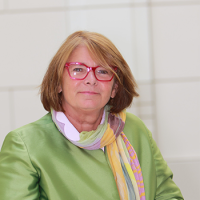
John O. Rankin Professor of International Affairs and Program Director, M.A. in International Affairs, George Washington University


Environmental Change and Security Program
The Environmental Change and Security Program (ECSP) explores the connections between environmental change, health, and population dynamics and their links to conflict, human insecurity, and foreign policy. Read more

Explore More
Browse Insights & Analysis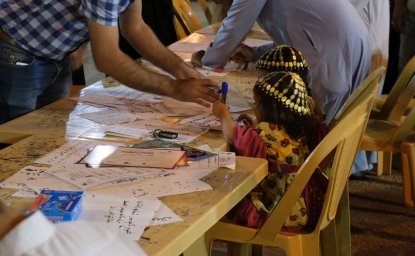
How Education Can Empower Young Women in MENA
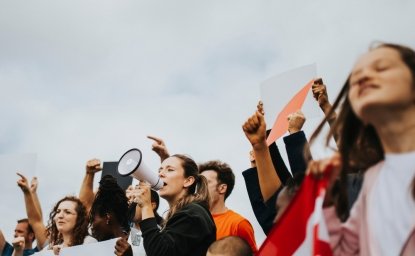
Empowering the Changemakers of Today: Young Women
